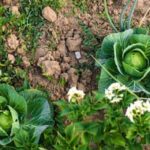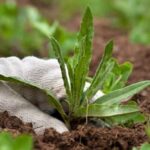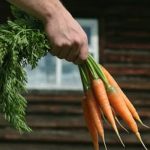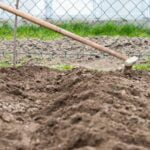Are you interested in starting your own vegetable container garden but don’t know where to begin? Look no further than this comprehensive guide to vegetable container gardening for dummies. Whether you’re a novice gardener or simply looking for a convenient way to grow fresh produce, this article will provide you with all the information you need to get started on your container garden journey.
Container gardening offers a flexible and accessible way for anyone to grow vegetables, regardless of their space limitations. In this guide, we’ll take you through the basics of vegetable container gardening, from choosing the right containers and selecting the best vegetables to caring for your plants, dealing with pests and diseases, and ultimately enjoying a bountiful harvest.
We understand that starting a new gardening venture can be overwhelming, especially if you’re new to the world of horticulture. That’s why this guide is designed specifically for “dummies,” providing simple and straightforward advice to help you become a successful vegetable container gardener. So let’s dive in and discover how easy it can be to grow your own fresh and flavorful vegetables right at home.
Choosing the Right Containers for Your Garden
When it comes to vegetable container gardening for dummies, choosing the right containers for your garden is one of the most important steps. The good news is that there are plenty of options available, so you can find the perfect containers for your space and gardening needs. When selecting containers, there are a few key things to keep in mind.
First, consider the size of the containers. In general, bigger is better when it comes to vegetable container gardening. Larger containers hold more soil, which helps prevent them from drying out too quickly, provides more space for root growth, and offers more stability for larger plants. A good rule of thumb is to choose containers that are at least 12 inches in diameter and depth.
Next, think about the material of the containers. You can find containers made from plastic, clay, wood, metal, and even fabric. Each type of material has its pros and cons when it comes to vegetable container gardening. For example, plastic pots are lightweight and easy to move around, while clay pots are porous and allow for better airflow to plant roots.
Lastly, consider drainage when choosing containers for your vegetable garden. Proper drainage is crucial for preventing root rot and other moisture-related issues. Look for containers with drainage holes in the bottom or be prepared to drill holes yourself if necessary.
In summary, when selecting containers for your vegetable container garden as a beginner or “dummy,” look for large-sized pots made from suitable materials with adequate drainage to set yourself up for success.
| Consideration | Importance |
|---|---|
| Container Size | Bigger provides more stability and room for root growth. |
| Container Material | Different materials offer various benefits and drawbacks. |
| Drainage | Proper drainage prevents root rot and moisture issues. |
Selecting the Best Vegetables for Container Gardening
When it comes to vegetable container gardening for dummies, selecting the best vegetables is essential for a successful and bountiful harvest. Not all vegetables are suitable for container gardening, so it’s important to choose varieties that thrive in confined spaces. Compact and dwarf varieties are ideal for containers as they require less space and have a more manageable root system.
Some of the best vegetables for container gardening include tomatoes, peppers, lettuce, spinach, radishes, carrots, and herbs like basil, thyme, and rosemary. These vegetables are well-suited for growing in containers due to their smaller size and shallow root systems. Additionally, they can thrive in the limited space provided by containers and still produce a plentiful harvest.
When selecting the best vegetables for your container garden, consider the amount of sunlight your space receives and the climate in your area. Some vegetables are better suited for full sun while others can tolerate partial shade.
It’s also important to consider your local climate to ensure that the vegetables you choose can thrive in your specific growing conditions. By carefully selecting the best vegetables for your container garden, you’ll set yourself up for a successful growing season and a bountiful harvest.
Preparing the Soil Mix for Your Containers
When it comes to vegetable container gardening for dummies, one of the most important factors to consider is the soil mix for your containers. The right soil mix will provide essential nutrients for your vegetables and promote healthy growth. In this section, we will discuss how to prepare the perfect soil mix for your container garden.
Choosing the Right Soil Components
The key to a successful soil mix for vegetable container gardening is a blend that is well-draining, retains moisture, and is rich in nutrients. A good base for your soil mix can be a high-quality potting mix or garden soil. To improve drainage, you may want to add ingredients such as perlite or vermiculite. Additionally, incorporating organic matter like compost or aged manure will help provide the necessary nutrients for your plants.
Creating Your Soil Mix
To create your soil mix, start by filling your container about one-third full with the base potting mix. Then, add in your chosen soil components such as perlite or vermiculite to improve drainage and organic matter like compost or aged manure to enrich the soil with nutrients. Mix these ingredients thoroughly before filling up the rest of the container with the prepared soil mix.
Testing and Adjusting Your Soil Mix
Before planting your vegetables, it’s important to test your soil mix to ensure it has the right consistency and pH levels for optimal growth. You can do this by using a pH testing kit available at most gardening stores.
If necessary, you can adjust the pH level of your soil mix by adding lime to raise the pH or sulfur to lower it. Once you have prepared and tested your soil mix, you are ready to move on to planting and caring for your vegetables in their containers.
By following these steps and creating the perfect soil mix for your vegetable container garden, you’ll be setting yourself up for success and enjoying a bountiful harvest in no time.
Planting and Caring for Your Vegetables
When it comes to vegetable container gardening for dummies, planting and caring for your vegetables is a crucial step in ensuring a successful harvest. Here are some tips to help you get started:
- Choose the Right Plants: Not all vegetables are suitable for container gardening. When selecting which vegetables to grow, consider the available space and sunlight in your garden. Some popular choices for container gardening include tomatoes, peppers, lettuce, herbs, and carrots.
- Planting Techniques: Proper planting techniques are essential for the success of your container garden. Make sure to follow the planting instructions on the seed packets or plant tags. Pay attention to the spacing and depth requirements for each vegetable variety.
- Caring for Your Vegetables: Container plants require regular maintenance to thrive. This includes watering, pruning, and providing support as needed. Keep an eye out for signs of disease or pest infestations, and take prompt action to address any issues that may arise.
Taking care of your container garden can be a rewarding experience, especially when you start seeing your vegetables grow and flourish. With these tips in mind, you’ll be on your way to becoming a successful vegetable container gardener in no time.
Watering and Fertilizing Your Container Garden
When it comes to vegetable container gardening for dummies, watering and fertilizing your container garden is an important aspect to ensure the healthy growth of your vegetables. Here are some tips to help you properly water and fertilize your container garden:
- Watering: When it comes to watering your container garden, it’s essential to check the moisture level of the soil regularly. Different vegetables have different water needs, so be sure to research the specific requirements for the veggies you’re growing. Generally, it’s best to water in the morning or evening to prevent evaporation, and water at the base of the plants rather than over the leaves.
- Fertilizing: Container gardens often require more frequent fertilizing than traditional gardens because nutrients can leach out of the containers more quickly. Choose a balanced fertilizer specifically designed for vegetables and follow the instructions on the label for how much and how often to fertilize. It’s also important to regularly inspect your plants for any signs of nutrient deficiencies and adjust your fertilizing schedule as needed.
In addition, using a good quality potting mix with added nutrients can help provide a good foundation for your vegetable container garden. Remember that overwatering or over-fertilizing can be just as harmful as neglecting these aspects, so be sure to find a balance that works for your specific plants.
Overall, mastering the art of watering and fertilizing your container garden will contribute significantly to the success of your vegetable gardening endeavors. By understanding the needs of your plants and providing them with adequate care, you’ll be on track to enjoying a bountiful harvest from your beautiful container garden.
Dealing With Common Pests and Diseases in Vegetable Container Gardening
Common Pests
One of the most common pests that can wreak havoc on your vegetable container garden is aphids. These tiny insects feed on the sap of plants, causing them to weaken and deform. Another common pest is the whitefly, which also feeds on plant sap and can quickly multiply if not controlled. Additionally, caterpillars and slugs can also cause damage to your vegetables by chewing on leaves and stems.
Recognizing Diseases
Diseases such as powdery mildew, blight, and root rot can also affect your container garden. Powdery mildew appears as a white powdery substance on the leaves of plants, while blight causes dark spots on leaves and eventually leads to wilting and death of the plant. Root rot is caused by waterlogged soil, leading to decay of the roots and poor nutrient absorption.
Preventing and Managing Pests and Diseases
To prevent common pests in your vegetable container garden, be sure to regularly inspect your plants for any signs of infestation. You can also use natural remedies such as neem oil or insecticidal soap to control pests without harming your plants or the environment.
When it comes to diseases, practicing good sanitation by removing any infected plant material can help prevent further spread. Additionally, providing adequate air circulation around your containers and avoiding overwatering can help prevent diseases from taking hold in your garden.
By being vigilant about pest and disease management in your vegetable container gardening for dummies venture, you can ensure a healthy and bountiful harvest from your container garden.
Harvesting and Enjoying the Fruits of Your Labor
As you’ve learned throughout this guide on vegetable container gardening, the process of growing your own produce in containers is not only convenient but also incredibly rewarding. By following the steps outlined in this article, from selecting the right containers and vegetables to caring for your plants and dealing with pests and diseases, you’ve set yourself up for success.
Now that your hard work has paid off and your vegetables are ready to be harvested, it’s time to enjoy the fruits of your labor. There’s nothing quite like the satisfaction of picking your own fresh tomatoes, peppers, or herbs right from your own container garden. The flavors will be unmatched compared to store-bought produce, and you’ll know exactly where your food is coming from.
In addition to harvesting your crops, taking care of your container garden also involves proper maintenance to ensure continued growth and productivity. Regularly pruning and caring for your plants will help them thrive throughout the growing season.
With a little dedication and knowledge about vegetable container gardening for dummies, you can continue enjoying a bountiful harvest from your container garden year after year. So get out there, keep planting, keep nurturing, and continue reaping the delicious rewards of your very own vegetable container garden.
Frequently Asked Questions
What Is the Easiest Vegetable to Grow in a Container?
The easiest vegetable to grow in a container is likely lettuce. It doesn’t require a lot of space, grows relatively quickly, and can be harvested multiple times. Plus, it thrives in cooler temperatures.
What Vegetables Grow Well Together in a Container?
Certain vegetables grow well together in a container due to their compatible growing conditions. For example, tomatoes, basil, and parsley are known to do well together in a container as they have similar sunlight and watering needs.
How Do You Start a Container Garden for Beginners?
Starting a container garden for beginners involves choosing the right containers, prepping the soil with proper drainage, selecting the right vegetables to grow based on available sunlight, and paying attention to watering and fertilizing schedules. It’s important to start small and gradually expand as you gain more experience.

If you’re looking to get into vegetable gardening, or are just looking for some tips on how to make your current garden better, then you’ve come to the right place! My name is Ethel and I have been gardening for years. In this blog, I’m going to share with you some of my best tips on how to create a successful vegetable garden.





